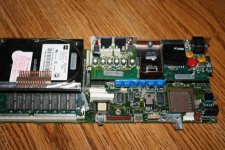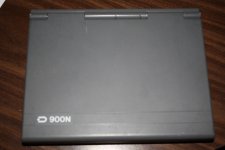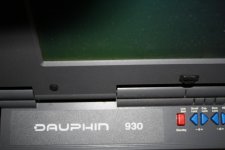Old Computers
Veteran Member
Hello everybody. I have a Dauphin 900N laptop (above the keyboard it says 930, but on the outside it says 900N).
At one point it powered up and functioned fine. I took it apart to change the CMOS battery and remove corrosion from the battery pack. There was also something floating around in the case and I removed that too.
Ever since I have taken the computer apart it has not functioned. It gives me an error code which consists of the following beeps: long long short short short. The BIOS is Phoenix. I looked up the error codes and the error appears to mean that the CMOS RAM is bad. Is this correct, or do you think that the error codes have been customized?
I have tried almost everything from removing the HDD, reseating the BIOS chips, reseating the RAM, etc to fix the problem.
After researching this computer on the internet I found very little information about the computer and its motherboard. The motherboard says ADI on it.
An odd thing is that it did POST once after the problem has manifested itself. I powered it up and it showed the POST screen (didn't boot because it lost the settings for the HDD). After I shut it down and turned it on later the problem came back. I think that this suggests that this problem is intermittent and can possibly be remedied.
EDIT: Just thought that I should mention this. Is the CMOS RAM a big blue thing (I can't think of a better description)? The motherboard says CMOS right next to it, but I am unsure if that label actually goes with that part.
Do you guys have any insights?
At one point it powered up and functioned fine. I took it apart to change the CMOS battery and remove corrosion from the battery pack. There was also something floating around in the case and I removed that too.
Ever since I have taken the computer apart it has not functioned. It gives me an error code which consists of the following beeps: long long short short short. The BIOS is Phoenix. I looked up the error codes and the error appears to mean that the CMOS RAM is bad. Is this correct, or do you think that the error codes have been customized?
I have tried almost everything from removing the HDD, reseating the BIOS chips, reseating the RAM, etc to fix the problem.
After researching this computer on the internet I found very little information about the computer and its motherboard. The motherboard says ADI on it.
An odd thing is that it did POST once after the problem has manifested itself. I powered it up and it showed the POST screen (didn't boot because it lost the settings for the HDD). After I shut it down and turned it on later the problem came back. I think that this suggests that this problem is intermittent and can possibly be remedied.
EDIT: Just thought that I should mention this. Is the CMOS RAM a big blue thing (I can't think of a better description)? The motherboard says CMOS right next to it, but I am unsure if that label actually goes with that part.
Do you guys have any insights?
Last edited:





